
 |
|||||||
|
|
|
|
|
|
|
The Martian Imperial Marines Guard (MIMG) was significant as the dominate Solar fighting force for a span of two centuries and for its influence on the formation of Rogar Farrar's Terran (later Solar) Marine Guard, the precursor of the Empire of Humanity's Imperial Marine Guard. The vestiges of the MIMG's structure and philosophy remains after four thousand years, with most major and minor starfaring powers (with the exception of the Terran Khalifate and Federation of Orion) adopting structures, ranks and doctrines that directly descend from the MIMG.
The establishment of MIMG predated the formation of the Martian Empire. This precursor force, the Hesperian Space Marine Guard (HSMG), was founded in 2483 as a battalion-sized unit to garrison Mercury. Duke Albert Kagnon-Mellon appointed Colonel Hellman Nair as the first commander of the HMSG.
Despite resistance from the Hesperian Army General Staff, Duke Albert increased the size of the HSMG to five battalions, including a Fleet Battalion and a Flight Squadron in 2490. As part of the Hesperian Military reorganization of 2500, the HSMG became the Space Marine Guard Legion (SMG Legion), with an authorized strength of ten Cohorts, each of three battalions strength, though in reality, it did not reach its full authorized size until 2512. Hellman Nair became the first Praetor of the SMG and quickly pushed to expand it's role; in 2509, the MIMG gain control of all Achilles and Courage class fleet transports and Hawk transport squadrons.
The SMG became the MIMG upon Albert's establishment of the Martian Empire in 2516. During the Martian Belter War (2519-27), the MIMG expanded quickly, first forming three Legions: I to support offensive operations, II to garrison Inner System holdings and III to garrison the Outer System. By the end of the war, the MIMG had expanded to five regular Legions and one Wraith special operations Legion. Concerned with inter-service rivalry, Emperor Albert replaced (and later executed) Hellman Nair in 2521, returning the fleet transports and fighter squadrons to Naval control. By war's end Lyssa Remek-Ombuto had become the first Marine Marshal.
During the turbulent remainder of the twenty-sixth century, the MIMG gradually expanded to ten Legions, scattered across the Solar System. The MIMG Flight branch was reestablished in 2535, with fighters and small (squad or platoon carrying) transports. The once supreme Martian Imperial Army became a reserve-only force and Legions V, VI and VII were permanently station at Mars and Phobos to maintain order.
The MIMG saw heavy action in the First Mercury War (2633-2636), committing nearly four Legions in a futile attempt to defend and recover the world. After Albert's abdication and assassination, Emperor Stanislov reduced the MIMG to four Legions and disbanded the Wraiths. After his 2639 coup, Emperor William quickly reversed this measure, reinstating the Wraiths and reconstituting all the disbanded Legions.
In 2708 a Wraith Team, conducted the first MIMG interstellar deployment on the Phoenix, Mars' first macrojump vessel.
The MIMG generally served well during the Martian War (2711-2714), but the unsupported Legions IV, VIII and IX proved unable to retain control of the Outer System, and surrendered their banners to Coalition forces. Vice Marshal Peytr Justice III, became the highest ranking Marine officer to die in combat, earning the Martian Cross for his defense of Ashima during the Battle of Ganymede.
In the post-war years, an isolated Mars decreased its military forces, choosing not to reestablish the three lost Legions. By 2720, Legion I was permanently assigned to support the small but growing Martian Interstellar Navy.
With the rise of a unified Terran Empire after 2740 and the Terran-Martian alliance during the System War (2743-2744), Mars regained its Outer System holdings and soon reconstituted Legions IV, VII and IX . The victories of Martian and Terran forces in the Second Mercury War regained the innermost planet for Mars, and led to the establishment of Legions XI, XII and XIII as the Mercury Corps, occupation and garrison forces.
In 2775, Martian Emperor Charles joined Mars to the Terran Empire as an independent kingdom, triggering the Third Mercury War. Legions XIV and XV were authorized before the creation of the Solar Empire in 2776, but they did not see service in the war. All sixteen MIMG legions joined Emperor Rogar's Solar Marine Guard, serving as numbered Mars Legions that were assigned piecemeal to Marine Guard Armies and served in the Pact War (2784-2787). The MIMG officially lost its identity in the military reorganizations following the establishment of the Empire of Humanity in 2789.
The MIMG's basic tenet was that every Marine was a fighter, a generalist first, developing into an expert with experience. The basic unit of the Marine was the enlisted soldier. All soldiers were volunteers and subject to rigorous pre-enlistment tests focused on aptitude and personality. Beyond certain minimum requirements, exceptional physical abilities were not important, as augmentation to MIMG standards was part of basic training. A recruit enlisted for an initial term of 4 Martian years (7.52 Standard years).
Basic training, involving indoctrination, augmentation, small unit tactics and firearms proficiency, required a full 50 weeks. Over time, the MIMG established four basic training bases on Mars. At the end of basic training, the recruit officially became a Marine and received the rank of Private (E1). All Marines underwent advanced training in zero-g and vacuum operations at the Phobos Marine Center. This training ran 20 weeks and ended with a graduation exercise involving an unassisted transit and reentry from Phobos to the Noachis Training Area on Mars. At the conclusion of this two week exercise, the Marine received a promotion to Private First Class (E2) and became eligible for assignment to a regular Marine unit.
Marine Officers either came from the ranks -- any Sergeant (E5 or above) could apply to the 100 week-long Marine Officers Cadet School -- or from the Marine Officers Academy, a two Martian year institution. Marine Officers in Technical units and with prior civilian training, especially Medical or Science Officers, could apply directly to the Marine Staff School, but such officers were generally not part of the chain of command or eligible for combat command assignments.
The MIMG was segregated into five specialized branches, or MOS (Marine Occupational Specialty) categories. These branches were Infantry, Armor, Fleet, Technical and Flight. All non-commissioned officers (E5 and above) had an assigned branch, and transfers between branches were uncommon, based on training prerequisites and staffing requirements.
The Infantry MOS was the starting branch for all Marines, and the bulk of Marines remained in that specialty. The Infantry included standard ground combat units, vehicular mounted light fighting units, orbital assault units and shipboard contingents.
With promotion to Lance Corporal (E3), a Marine applied for MOS-specific training. Based on service need, the Marine might get the training of choice, but most often got an assignment based on aptitude and staffing requirements. Infantry MOS training included heavy weapons, vehicle operations and leadership skills. A Corporal (E4) had completed a basic MOS examination and became eligible of a non-commissioned slot based on performance, seniority and availability.
A Marine received the insignia and assignment of a MOS-trained non-commissioned officer with a promotion to Sergeant (E5), usually after at least two or three Martian years of service. Infantry Sergeants became team leaders, other Sergeants received assigned a team members in units within their MOS branch.
An infantry team was led by a Sergeant. Teams were normally composed of four Marines, including the Sergeant and at least one Corporal. At least one member of the team was trained to operate heavy weapons or light combat vehicles.
Armor units specialized in heavy vehicular planetary combat (land, sea and air). A Staff or Master Sergeant (E6 or E7) led a Marine Armor team comprised of three to five Marines, all E5 or E6 specialists, assigned to one combat vehicle.
Fleet units served as advanced shipboard troops. In addition to standard shipboard security and combat duties, Fleet Marines operated shipboard weaponry, crewed boarding parties and operated small spacecraft. An E6 or E7 led a team of four Fleet Marines.
Technical units were specialized Marines trained in electronic warfare, medicine, cyber warfare, vehicle (including spacecraft) maintenance, remote operations and other specialized fighting and support roles. Depending on expertise, the commander of a team of four Technical Marines could rank as high as First Sergeant (E8).
Flight units specialized in spacecraft operations; the smallest Flight branch unit was the equivalent of a Platoon (see below).
A Marine Squad was a unit normally composed of three teams. It was led by a squad leader, who also acted as the leader of one of the teams. Infantry Squad Leaders were almost always Staff Sergeants (E6), but other MOS squad leaders were normally Master or First Sergeants (E7 or E8). An Infantry squad consisted of twelve Marines. Within other branches, the size of a squad could range from one (rarely, except in Armor units where a vehicle crew was a Squad) to three teams, and four to fifteen Marines.
A Platoon consisted of three squads and a command team. The command team included an officer -- an Cornet (O1) or Subaltern (O2) -- a Platoon Sergeant (a Staff or Master Sergeant (E6 or E7) in the Infantry, but often a First Sergeant (E8) in other units) and a medic (a trained E5 or E6 battlefield paramedic). On occasion, a First Sergeant would command a Platoon, but usually only until an officer became available. The command team might have additional staff, including a forward observer, intelligence analyst, technical specialist or heavy weapons assigned to it. A full Infantry platoon consisted of 39-42 Marines. Platoon-sized units in other branches might have two to four squads and 20-50 Marines assigned.
In Flight units, a single spacecraft was considered a platoon for organizational purposes; this Platoon would include the pilot and other officers, the flight crew and the maintenance crew assigned to that vehicle. Marine pilots were officers assigned to fly fighters, gunships and assault landers, but enlisted personnel from the Flight MOS branch filled out crew positions on these spacecraft. A crew chief (E6, E7 or E8) led a team of two to five specialists, depending on vehicle and mission requirements. Flight units were assigned to Marine Flight Squadrons (see Battalion).
A Marine Company was the smallest independently deployed Marine Unit. An infantry company consisted of three Infantry platoons and the command section. A Centurion (O3) or Major (O4) led a Company. The company command section included an executive Officer (O2) a Company senior NCO (E8 or E7), and several specialist MOS teams, always including medical and communications, but also maintenance, intelligence, specialized weapons or others, as the unit required. An Infantry Company consists of 130-140 Marines. An Armor Company was referred to as a 'Troop'. A specialized heavy weapons company was designated a 'Battery'. In Flight units, the 'Flight' was the equivalent of a Company, though it lacked a command team. Within each Battalion (or Squadron) Companies (Flights/Troops/Batteries) were identified by the Greek alphabet (Alpha, Beta, Gamma, Delta, rarely Epsilon and Zeta - if a seventh Company was added to a battalion, its designation was Omega). Specialist branch Company units were generally smaller than infantry units, and could contain as few as 50 Marines.
A Marine Battalion usually consisted of four Company units and a platoon-sized command unit. In most Infantry Battalions, one heavy weapons Company (usually a Battery or Troop) supplemented three Infantry Companies. Armor Battalions usually included three Armor Troops and a Battery, or a heavy infantry Company. A Battalion commander was a Lieutenant Colonel (O5), assisted by an executive officer (O3) and 3-6 staff officers. The command unit included a Doctor-led medical unit, a supply unit, communications unit, intelligence unit and other specialized teams as required. The senior NCO in a Battalion was a Sergeant Major (E9). Armor and Flight Battalions were called 'Squadrons'. Flight Squadrons were often attached to Navy Flight Groups or Wings, though they remained nominally under the command of a Cohort Colonel or a Marine Wing (Black) Brigadier. An Infantry Battalion consisted of 560-600 Marines. Specialist Units might contain as few as 100 Marines. Battalions were numbered units within a Cohort.
A Marine Cohort was the smallest independent command unit. It was a permanent formation, expanding or contracting as needs arose, but never disbanded. A Cohort was always a mixed force unit, normally composed of three Battalion-sized units and two Flight Squadrons -- usually one attack and one transport. A Cohort was typically rated as an Infantry or Armored unit, though its nature might change over time. Fleet Battalions were assigned to numbered Cohorts, though they could be detached for years from their primary unit. A Colonel (O6) led the company-sized command unit which included all functions required for an independent, often unassisted military operation. The senior NCO of a Cohort was a Command Sergeant Major (E10). Cohorts ranged widely in size. A primarily Infantry Cohort might consist of 2,000-2,200 Marines, while Armored Cohorts might be as small as 500-600 Marines. A Cohort was numbered within its Legion, even when assigned to a Brigade.
Within the MIMG, a Brigade was an ad-hoc unit, usually composed of two to seven Cohorts. Brigades were deployed on mission-specific expeditions. A Brigade was led by a Brigadier (O7), assisted by a company-sized command team. A Brigade had a Colonel acting as Flight Group commander, coordinating the operations of all Flight Squadrons assigned to the Brigade. Marine Brigades might contain between 1,200 and 15,000 Marines, depending on mission requirements. Brigades were designated by colors within their Legions and led by the corresponding Brigadiers. From senior to junior, Brigade (and Brigadier) designations were: Red, Blue, White, Green and Yellow. The Black Brigadier, a Flight specialist Brigadier, commanded the Legion's Air Wing.
The Legion was the cornerstone unit of the MIMG. Legions were permanent, independent units commanded by a Praetor (O8) [Note: a purist, would protest that the Roman Legions were led by Legates, but that's not the way Emperor Albert wanted it]. A Legion was always referred to by it number, expressed in following Roman numerals. A Legion was composed of ten Cohorts. The Legion's command team ranged up to two Battalions in size and included a hospital unit, a quartermaster Company and the command structure to support a complete Marine Flight Wing -- in addition to the squadrons assigned to individual Cohorts. A Praetor had up to six Brigadiers (O7) on staff. These Brigadiers were designated by color, with the most senior assigned to command Brigades as they were formed. The least senior Brigadier acted as the Legion's executive officer. A Legion contained 15,000 - 25,000 Marines. Depending on operational considerations, a Praetor might report to a Vice Marshal (O9) commanding a Marine Corps, an Army Marshal (O10) or a Vice Admiral or full Admiral (O9 or O10) commanding a Task Force or Fleet.
A Corps was a mission-specific or geographic specific unit composed of two to five Legions and commanded by a Vice Marshal (O9). A Corps might have an independent Flight Wing under its command, or might rely on flight support from individual Legions. A Corps numbered from 32,000 - 100,000 Marines. Corps either reported to Marine Armies or Naval Fleets, depending on deployment.
A Marine Army was a logistical unit composed of two to four Corps or six or more independent Legions. Armies were commanded by Marshals (O10) and were assigned a Cohort-sized command force and a full Flight Wing. A Marine Army was an independent command reporting directly to the General Staff and could number 70,000 -300,000 Marines.
An Army Group was a unit composed of multiple Armies and commanded by a Field Marshal (O11). During the course of the Martian Empire there was never more than one Army Group and the office of Field Marshal of the Marine Corps was often held the Emperor.
The senior professional Marshal or Field Marshal of the Marine Guard was designated the Chief of Staff, with the second most senior Marshal designated the Vice Chief, in addition to an other command duties.
From Company level and above, Marine units took pride in their unit designations. Examples of a full designation include:
Alpha Company, Third Battalion of Second Cohort, Legion VI (an Infantry company)
Gamma Troop, Second Squadron of Third Cohort, Legion IV (an Armor Troop)
Delta Battery, First Battalion of First Cohort, Legion IX (an Artillery Battery)
Beta Flight, First Squadron of Second Group, Legion IV (a Flight assigned to the Legion's Flight Wing)
Beta Flight, First Squadron of Second Cohort, Legion IV (a Flight assigned to a Cohort's Squadrons)
Red Brigade, Legion III (senior Brigade of a Legion)
All MIMG troopers and officers were already highly trained soldiers who would more than qualify as "special" or "elite" forces under many definitions. However, certain missions undertaken by Martian forces required the highest level of military expertise. During the Mars-Belter War, Emperor Albert authorized the creation of the Wraith Legion. Initially, the Legion was composed of a single understrength Cohort, but by the end of the war, the Wraiths, though still top secret, had grown to nearly 3,000 elite troops. In the postwar years, Wraith training and doctrine became standardized.
Only senior Sergeants (E6-8) and junior Officers (O2 or O3) who had already committed to or begun a second enlistment term could apply to the Wraith program. More senior officers or Sergeant Majors could apply, but they received demotions to First Sergeant or Centurion upon admittance to the program. Only 10% of applicants passed the initial screening process. Less than a quarter of applicants completed the two Martian Year Wraith Training School.
All Wraith candidates were required to achieve expert ratings in unarmed, light weapons, heavy weapons and zero gravity combat, vacuum survival operations, high gravity operations, infiltration, cyber warfare and field medicine. Additionally each candidate selected and mastered two advanced skills, including vehicle or spacecraft operations, leadership, demolitions, or specific technologies. Examination checkpoints occurred during each quarter of the training, with "washouts" returning to regular service.
Candidates that passed the fourth quarter exams undertook a comprehensive graduation exercise. The details of these exercises remained highly classified, but all involved considerable risk. Exercises had space, survival, combat and high-gravity components, the later occurring on Earth, either in territories of allied powers or in lawless regions. Space and combat activities allegedly involved covert "pirate" attacks on Belter or even neutral shipping. The fatality rate for this compressive exercise reportedly averaged 20%. At the conclusion of the final exercise, the graduated Wraith Marine received a promotion and assignment to a Wraith unit and was required to commit to an additional four Martian year term.
The basic Wraith unit was a Team consisting of twelve soldiers, including two to four officers, with the commander a Centurion or Major. Teams were generally dedicated to specific functions and duties. Up to eight teams formed a Wraith Group, led by a Lieutenant Colonel. A set of Groups formed a Wraith Cohort, led by a Colonel. As with other Marine units, the Cohort was a permanent organization, as were Teams, with Groups formed to support specific missions. Unlike other units, Teams were numbered within a Cohort, from First Team onward, and not by Groups, which had Greek letter designations. A Cohort might contain over fifty Wraith Teams.
As with other MIMG Units, ten Cohorts formed a Legion. A temporary set of Cohorts, the equivalent of a brigade, was designated a Wing and given a color designation similar to Brigades. There was only one MIMG Wraith Legion, it had no numeral designation. The staffing of the Wraith Legion varied from as few as 2,500 Marines in peacetime to as many as 10,000 during the Martian War. The Praetor in charge of the Wraith Legion reported directly to the General Staff.
| Officers | Enlisted* | ||||||
| Field Marshal | O11 |
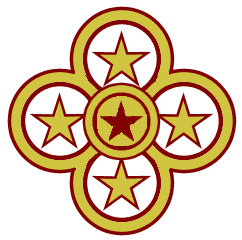 |
|||||
| Marshal | O10 |
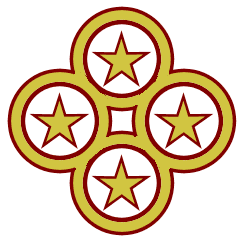 |
Command Sgt. Major | E10 |
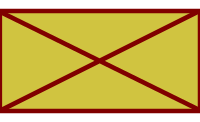 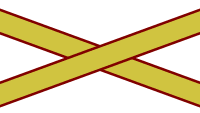 |
||
| Vice Marshal | O9 |
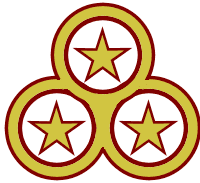 |
Sergeant Major | E9 |
 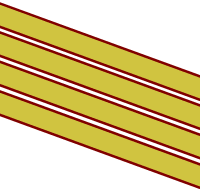 |
||
| Praetor | O8 |
 |
First Sergeant | E8 |
  |
||
| Brigadier | O7 |
 |
Master Sergeant | E7 |
 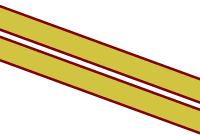 |
||
| Colonel | O6 |
 |
Staff Sergeant | E6 |
 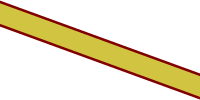 |
||
| Lt. Colonel | O5 |
 |
Sergeant | E5 |
 |
||
| Major | O4 |
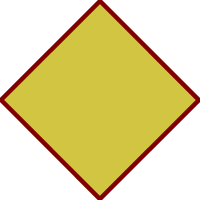 |
Corporal | E4 |
 |
||
| Centurion | O3 |
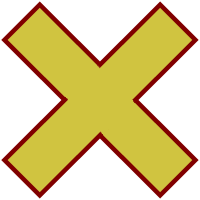 |
Lance Corporal | E3 |
 |
||
| Subaltern | O2 |
 |
Private First Class | E2 |
 |
||
| Cornet | O1 |
 |
Private | E1 |
 |
||
*This chart shows Infantry MOS Emblems for NCOs. MIMG MOS emblems for various units are:
| Infantry |
 |
| Armor |
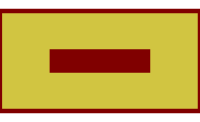 |
| Technical |
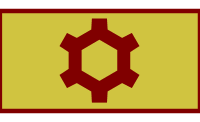 |
| Fleet |
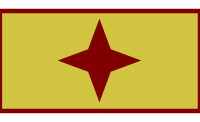 |
| Flight |
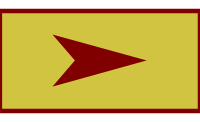 |
| Wraith |
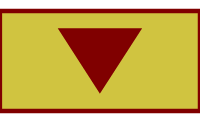 |
Note: Wraith units were not acknowledged until 2540. Prior, and often later, Wraith units, when displaying insignia at all, would display Infantry or Fleet MOS markings.
In addition to the Standard Branches and units, the MIMG also detached troops for three special purposes: Imperial security, embassy protection and foreign cadre service. These specialist troops were drawn from applicants with at least one term of service and required special training or background clearance.
The Emperor's Own Guard (EOG) was a Cohort-sized unit drawn from all branches of the Marines and commanded by a Brigadier. The EOG was responsible for security for the imperial family and included Flight crews, ceremonial guards and covert intelligence teams. All members of the EOG underwent deep security screenings and served for in the unit for a full term.
The MIMG provided security detachments for embassies among foreign powers throughout the Solar System. In addition to embassies and consulates among the other Solar powers, the MIMG provided security at over one hundred diplomatic stations on Earth. Embassy detachments serviced in the Imperial Color Guard (ICG), with individual units ranged from a Team to a Company in size and normally drew from the Infantry, though senior ambassadors often rated a Flight team and dedicated spacecraft.
Marine Infantry officers and NCOs were periodically assigned to various Earth governments as trainers or military advisors, occasionally engaging in combat operations in conjunction with local forces. Rarely, Armor, Technical or Flight units (plus unacknowledged Wraith Teams) also served in that capacity. The Cadre Service was an independent command structure, usually led by a Brigadier or Praetor based out of a Martian Embassy in a major neutral power.
All Martian Imperial Forces shared the same decoration hierarchy. Decorations for valor were individual awards. Battle decorations were issued as unit citations. Additionally all marines became eligible for a variety of service ribbons. Being a combat casualty did not in itself impart a decoration. Emperor (then Duke) Albert refused to decorate soldiers "just because they forgot to duck".
Unlike the Martian Army, both Marine and Naval decorations for valor could be awarded for both combat and non-combat valor. The extreme danger posed by service in space warranted this expansion of the definitions of valor and heroism, as space was often the deadliest enemy. Regardless, the Martian Cross was rarely awarded outside of combat. The Martian decoration of valor were:
Martian Cross: The highest military award for extreme heroism, awarded by order of the Emperor. Only 245 Marines received the Martian Cross between 2516 and 2789, only four Marines received it twice. Most awards were posthumous.
Crimson Star: Awarded for exceptional valor, gallantry or ingenuity in the face of extreme danger as recommended by the Chief of Staff.
Obsidian Star: Awarded for valor, gallantry or ingenuity in the face of extreme danger as recommended by a senior general officer (O8 or above).
Phobos Star: Awarded for heroism in the face of danger as recommended by a general officer (O7 or above).
White Star: Awarded for heroic or meritorious achievement or service while in the face of danger, as recommended by a commanding officer at the company level or higher.
Battle Decorations were campaign medals, issued to all troops in good standing that completed a tour of duty that included a designated combat operation. In some cases, a tour of duty could result in multiple campaign medals, as determined by the service Chief of Staff. The classes of Battle Decorations were:
Imperial Combat Medal: The most prestigious service decoration, issued by the Emperor for extraordinary heroism and determination in action.
Space Assault Medal: Issued to units that undertook assaults across open space without the benefit of a vehicle, including reentry jumps, parabolic landings and assault boardings.
Space Combat Medal: Issued to units that conducted combat operations in space, including transport and fighter combat and surface operations on asteroids, small moons and habitats.
Ground Combat Medal: Issued to units that conducted combat operations on planetary or large moon surfaces.
Combat Service Medal: Issued to occupation troops, fleet troops in combat zones and other under threat of enemy fire.
Service ribbons rewarded Marines for conduct, skill and length of service. These ribbons included:
Good Conduct Ribbon: Marines who have completed a full four Martian year term of service without non-judicial punishments, disciplinary infractions, or court martial offenses receive a good conduct ribbon.
Expert xxx Ribbon: Each expert ribbon denoted an expert rating in a particular skill, e.g. the Expert Rifleman Ribbon.
Superior xxx Ribbon: This ribbon was received for demonstrating a skill level above Expert in a particular skill.
Master xxx Ribbon: This ribbon indicated the highest recognized skill level.
Exceptional Service Ribbon: This award was issued to all Marines who remained in the Guard after completing five full terms.
In addition to standard pay rates based on terms of service and rank, the MIMG also based wages on demonstrated skill. Each expert rating added a fixed amount to the Marine's pay scale. Higher degree expert ratings added an equivalent expert "chit" to the pay rate.
While pay tables varied during the centuries of the MIMG's existence, the basic rule for remuneration remanded fairly constant. Above the basic trooper E1 rate, each term of service added one chit to pay, plus another for each good conduct ribbon. Each promotion added two chits and each expert or expert degree rating added one chit. The basic officer O1 rate was equivalent to an E7 base rate.
Awards for exceptional valor also added to the pay rate, the Obsidian Star was worth one chit, the Red Star two, and the Martian Cross, four.
This pay system rewarded expertise and allowed a path of advancement for those who did not seek the traditional responsibilities of increased ranks. In some units, especially the Wraith Legion, experienced non-commissioned officers often received a higher wage than even mid ranking officers.
A Marine that served five full terms (20 Martian or 37.6 standard years) or that received a permanent disability as a result of service, was eligible for retirement. Retired Marines received half pay for life and, if able bodied, were eligible for recall for a further ten Martian years beyond their last day of service. Retired Marines were the only Martian "civilians" legally able to own and carry lethal projectile and energy weapons within the Martian territories. All veteran Marines, retired or not, received free premium medical treatment for life. Retirees received free regeneration therapy for life.
All pages and images ©1999 - 2011
by Geir Lanesskog, All Rights Reserved
Usage Policy
![]()